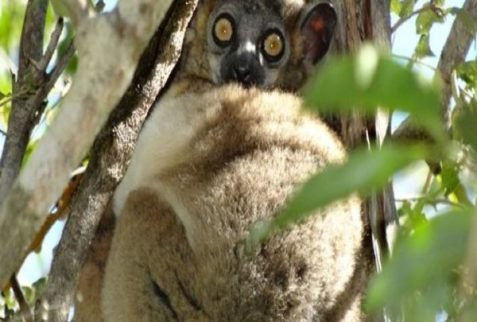Zombitse-Vohibasia National Park: Madagascar’s Hidden Gem for Birdwatchers and Nature Lovers
Tucked away in the southwest of Madagascar, Zombitse-Vohibasia National Park is a lesser-known but incredibly rich biodiversity hotspot. Renowned especially for its rare and endemic bird species, this park offers an unforgettable experience for birdwatchers, hikers, and wildlife enthusiasts. It may not be as famous as Isalo or Andasibe, but Zombitse is one of the best places in Madagascar for spotting endemic species—all within a relatively compact and accessible space.
Covering over 36,000 hectares, the park is a patchwork of dry deciduous forests, savannas, and rocky outcrops. It serves as a crucial ecological transition zone between the western dry forests and the southern spiny thickets of the island. With a mix of accessible trails, endemic flora, and vibrant fauna, Zombitse-Vohibasia is a must-visit for those heading through southern Madagascar.
Location
Zombitse-Vohibasia National Park is located in southwest Madagascar, between the towns of Sakaraha and Ilakaka, about 150 km northeast of Toliara (Tuléar) and 90 km west of Isalo National Park. It lies along the RN7 highway, one of the main travel routes in the country, making it an ideal stopover for travelers heading between Tulear and the highlands.
Despite its easy access, the park remains off the radar for many tourists, offering a peaceful and uncrowded alternative to more frequented destinations.


When to Go
The best time to visit Zombitse-Vohibasia National Park is during the dry season, from April to October. During this period, the weather is mild, the trails are dry and accessible, and animal sightings—especially birdlife—are at their peak.
-
May to August is ideal for spotting lemurs and birds, as vegetation is less dense and animals are more active.
-
September to November offers a higher chance to see blooming orchids and rare reptiles before the rainy season begins.
Avoid the heavy rains of December to March, when trails may be slippery and some wildlife harder to observe.
Hiking Circuits and Activities
Zombitse-Vohibasia offers several circuits for all levels of hikers and nature lovers. These trails are relatively short and easy compared to other parks, making the park perfect for half-day visits or quick wildlife stops along the RN7.
Popular Circuits Include:
-
Zombitse Circuit (1–2 hours):
Perfect for birdwatching and spotting lemurs. This loop brings you into the heart of the deciduous forest with good chances to see Verreaux’s sifaka, ring-tailed lemurs, and colorful geckos. -
Vohibasia Circuit:
This trail focuses more on botanical diversity, including baobabs, orchids, and medicinal plants. It’s a gentle hike suitable for all ages. -
Ihoky Vohimena Sector:
Less visited but offers excellent chances to see reptiles, frogs, and less-disturbed habitats.
All circuits are accompanied by local guides who know the forest intimately and can help you spot hidden creatures and understand the ecological importance of the region.
Fauna: A Paradise for Bird and Lemur Lovers
Zombitse-Vohibasia is often referred to as Madagascar’s birding capital in the southwest. The park is home to an astounding array of wildlife, many of which are endemic and endangered.
Birdlife:
-
155+ bird species, including:
-
Appert’s Greenbul (Bernieria apperti) – a Zombitse-exclusive species
-
Cuckoo-roller, Madagascar Hoopoe, and Giant Coua
-
12 species of aquatic birds around seasonal ponds and wetlands
-
47% of the park’s bird species are endemic to Madagascar, with 24% endemic to the region itself
-
Whether you’re a beginner or expert birder, you’ll find Zombitse to be a goldmine of rare and colorful sightings.
Mammals and Reptiles:
-
13 species of lemurs, including:
-
Verreaux’s sifaka – famous for its “dancing” movement
-
Ring-tailed lemur (Lemur catta)
-
Red-fronted brown lemur
-
-
33 species of reptiles, including:
-
Colorful Phelsuma geckos
-
Various chameleons, some unique to the area
-
-
8 amphibian species, including the bright Mantella, a small frog found only in Madagascar
Many animals can be seen close to the park’s entrance, making it accessible even for those with limited time.
Flora: Rare, Endemic, and Surprisingly Diverse
Despite its dry tropical climate, Zombitse-Vohibasia harbors a lush and varied plant life, including many species not found anywhere else.
Key Plant Highlights:
-
Baobabs, including:
-
Grandidier’s baobab
-
Dwarf baobab, unique to the region
-
-
Orchids such as:
-
Angraecum spp.
-
Aeranthes spp.
-
-
Apocynaceae, euphorbiaceae, and didiereaceae – drought-adapted plants often used in traditional medicine
-
Strangler trees and aloes
-
Pandanus palms and endemic grasses along the drier edges of the forest
The forest also contains valuable hardwoods like:
-
Rosewood
-
Baudouinia
-
Protorhus abrahamia – traditionally used for carving and coffins
Botanists and photographers alike will appreciate the contrast between thick forest, succulents, and spiny shrubs within such a compact area.
Final Thoughts
Zombitse-Vohibasia National Park may not be the largest or most famous in Madagascar, but it holds some of the island’s rarest wildlife and plant species. Whether you’re stopping over en route to Tulear or making it a destination in its own right, Zombitse rewards visitors with close encounters, peaceful trails, and a biodiversity that surprises at every turn.
Perfect for birdwatchers, nature photographers, or anyone curious about Madagascar’s unique ecosystems, this park is a true hidden gem waiting to be explored.
Ready to visit Zombitse-Vohibasia National Park?
Plan your stop on the RN7 route and discover one of Madagascar’s best-kept ecological secrets.
